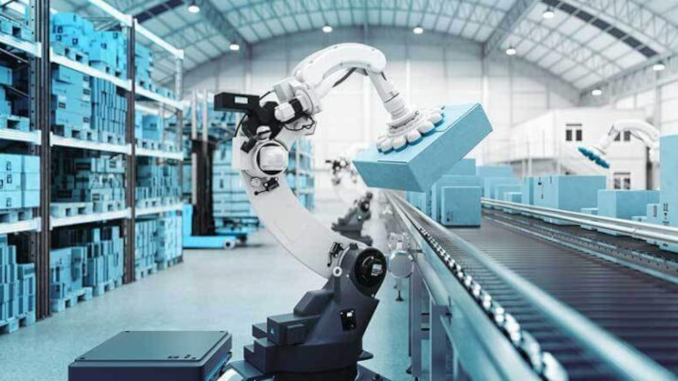
By José Niño
On Oct. 3, 2024, the International Longshoremen’s Association, the union representing 45,000 U.S. dock workers that recently went on strike across East and Gulf Coast ports ended a three-day strike. The longshoremen are expected to continue working until Jan. 15 so that there’s enough time to hammer out a new contract.
Click the Link Below to Listen to the Audio of this Article
The temporary end to the strike came after the union and the U.S. Maritime Alliance, which acts as the representative for ports and shipping companies, reached a tentative agreement on compensation.
The strike began on Oct. 1 after the dock workers union contract expired and a disagreement about wages and the automation of work functions began to surface. Workers at 36 ports that span Maine all the way down to Texas went on strike, adding more chaos to an already unstable 2024.
Initially, many onlookers feared the strike would cause severe economic dislocations. There was a general apprehension of goods shortages affecting stores nationwide if the strike turned into a multi-week affair.
The union had been pushing for a 77% wage increase across a period of six years in addition to a total ban on the use of automation at the ports. Many union members view automation as a threat to their employment, while business owners view it as a tool to increase their profits
Automation is one of the more polemical issues that has kept many policymakers and analysts up at night. Automation deals with the use of technology to carry out tasks or processes with little to no human involvement. Machines, software and systems are generally used to carry out repetitive or complex tasks with the aim of boosting accuracy, efficiency, and productivity, all while reducing the need to use manual labor. Through automation, a good amount of labor-intensive or physically dangerous work could be phased out.
Indeed, there is an undeniable negative impact that automation has in the short-term. Countless workers will be displaced and end up unemployed once businesses recognize that automation makes operations more streamlined and profitable. Such economic displacements will require policymakers to craft certain policies that can get these workers back on their feet and protect them in case of prolonged periods of unemployment.
This highlights the importance of the U.S. maintaining an education system that prepares the young for the realities of the ever-changing economic landscape of the 21st century.
Automation is already baked in the cake, and it’s best for the United States to get with the times. China is already riding the automation wave by using automation and highly skilled graduates to boost the productivity of Chinese companies. China’s East Asian rival in Japan has also made a name for itself by using robotics across its economy.
With the advent of robots being incorporated into the workforce, unskilled work and other menial labor will be rendered obsolete. The natural impulse for people trying to make sense of the implications of robotics is to worry about society moving toward a dystopian future dominated by robots. However, there is a silver lining here. An economy that largely adopts automation will no longer need helot labor from the Global South.
The current U.S. economic system, which is motivated by short-term profit-seeking, consequences be darned, heavily relies on cheap foreign labor. Instead of making corporate investment in automation that boosts the productivity of workers and generates wealth, U.S. economic elites are still relying on an increasingly antiquated, labor-intensive model of importing foreign migrants. By continuing these practices, the United States is effectively impoverishing itself and enriching the old money economic lords.
Several immigration restriction activists, such as Center of Immigration Studies Executive Director Mark Krikorian, have sounded the alarms on America’s overreliance on cheap labor in an era where East Asian rivals such as Japan and China have incorporated automation to take their productivity to new heights.
In his book The New Case Against Immigration: Both Legal and Illegal, Krikorian bluntly put it, “Japan gets robots; we get Mexicans.” It should be noted that the aforementioned East Asian nations are ethnostates with plummeting birth rates. That said, China and Japan have used automation, as opposed to importing millions of foreigners, to ensure that their economies churn along despite the demographic challenges they face.
At this point, immigration restrictions should incorporate automation, warts and all. It not only boosts worker productivity, but it also reduces the need for unscrupulous businesses to import cheap labor. Modern-day labor unions are more concerned with maintaining a labor aristocracy of sorts that uses the state to secure high wages at the expense of other workers and overall technological development.
To be sure, the path toward automation will have its share of speed bumps, and a soft-landing for workers replaced by automation has to be addressed with retraining and education. But these are the challenges to be faced on the greater road to prosperity. Automation provides us a unique opportunity to reap the benefits of greater economic prosperity while also undermining one vector of the civilization-destroying process that is mass migration. America should embrace the future world automation presents.
José Niño is a freelance writer based in Austin, Texas. You can contact him via Facebook and Twitter. Get his e-book, The 10 Myths of Gun Control at josealbertonino.gumroad.com. Subscribe to his “Substack” newsletter by visiting “Jose Nino Unfiltered” on Substack.com.






Good! Work Replacement Machines have to be removed.